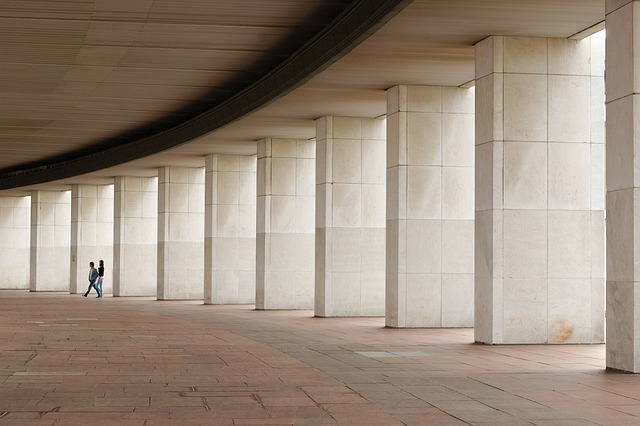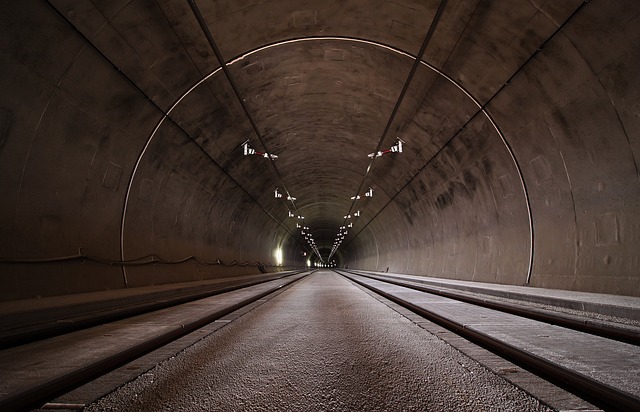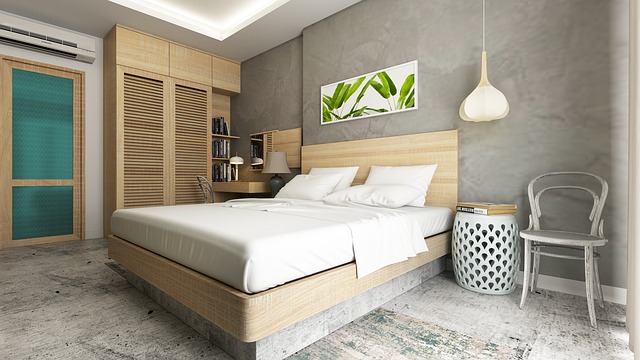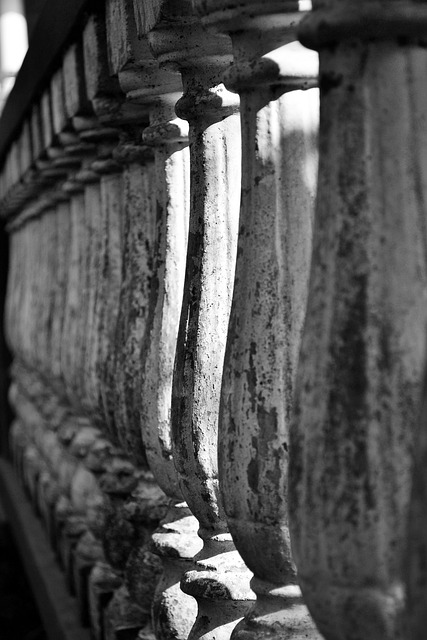Insulated Concrete Forms (ICFs) are an advanced construction solution that provide enhanced energy efficiency and structural strength compared to traditional building methods. These systems consist of interlocking foam blocks filled with concrete, offering superior thermal insulation, which can reduce heating and cooling energy requirements by 40-60%. The continuous insulation in ICF walls minimizes thermal bridging, maintaining stable indoor temperatures and contributing to year-round comfort. ICFs also serve as effective soundproofers, significantly reducing noise disruption due to their high-density concrete and advanced foam design, which collectively offer a high Sound Transmission Class (STC) rating. Additionally, the use of ICFs in construction leads to cleaner job sites, aligning with sustainable building practices and potentially offering long-term savings on energy and maintenance. With their robust performance against extreme weather and seismic activity, ICFs are an attractive option for those seeking durable, cost-effective, and environmentally friendly homes or buildings.
Insulated Concrete Forms (ICFs) represent a transformative leap in modern construction, offering robust walls that seamlessly blend durability with energy efficiency. This article delves into the multifaceted benefits of ICF technology, from its superior soundproofing capabilities to its pivotal role in sustainable building practices. Explore the science behind ICF’s exceptional insulation properties, the longevity and resilience it brings to both residential and commercial structures, and the cost-effective savings over time. We will guide you through the construction process, highlight key benefits, and provide insights from industry professionals on effectively utilizing these systems. Join us as we examine the environmental advantages of ICF and how this innovative approach not only enhances safety during disasters but also allows for customized design flexibility within your project scope.
- Introduction to Insulated Concrete Forms (ICF) and Their Significance in Modern Construction
- The Science Behind ICF Walls: How They Offer Superior Insulation and Soundproofing
- Key Benefits of Using ICF for Residential and Commercial Projects
- Understanding the Components of ICF Systems and Their Contribution to Reinforcement and Soundproofing
- A Step-by-Step Guide to Constructing Walls with Insulated Concrete Forms
Introduction to Insulated Concrete Forms (ICF) and Their Significance in Modern Construction

Insulated Concrete Forms, commonly known as ICFs, represent a significant advancement in modern construction practices. These high-performance building systems consist of interlocking foam blocks that are filled with concrete to create walls with superior insulation properties. The integration of ICFs in the building process offers numerous benefits over traditional stick-frame construction. Notably, ICF walls provide exceptional thermal performance, effectively reducing energy consumption for heating and cooling by upwards of 40-60%. This efficiency is due to the continuous insulation that minimizes thermal bridging, a common issue with conventional wall assemblies.
Moreover, the robust nature of ICFs contributes to enhanced structural integrity. These forms lock together to create a monolithic concrete wall that is both strong and stable. The concrete within the forms acts as a thermal mass, helping to regulate indoor temperatures and improve overall comfort. Additionally, ICFs are designed to be versatile and can accommodate various architectural designs without compromising on strength or insulation value. Their ability to create reinforced, soundproof walls makes them an ideal choice for both residential and commercial projects seeking to mitigate noise pollution from external sources. The adoption of ICF construction is a testament to the industry’s commitment to sustainable building practices that offer durability, energy efficiency, and comfort, making them a cornerstone in the evolution of modern construction.
The Science Behind ICF Walls: How They Offer Superior Insulation and Soundproofing

Insulated Concrete Forms (ICFs) represent a modern building technique that delivers exceptional insulation and soundproofing properties, making them an ideal choice for both residential and commercial construction. The science behind ICF walls lies in their innovative design, which incorporates two layers of rigid foam insulation around a structurally-reinforced core, typically made from high-performance plastic. This configuration creates a near-seamless thermal envelope that significantly reduces heat transfer. Consequently, the interior environment remains at a stable temperature with minimal energy expenditure for heating or cooling.
Moreover, the mass of the concrete within ICF walls plays a critical role in sound attenuation. The dense material acts as a barrier against airborne and structural-born noise. This is due to the fact that concrete has a high Sound Transmission Class (STC) rating. The space between the two foam layers is often filled with concrete, further enhancing the acoustic properties of the wall. As a result, ICF walls provide an environment where sound pollution is minimized, creating a peaceful living or working space. The combination of these factors makes ICFs not just an energy-efficient solution but also a robust defense against noise intrusion, setting them apart from traditional construction methods in terms of both thermal and acoustic performance.
Key Benefits of Using ICF for Residential and Commercial Projects

Insulated Concrete Forms (ICFs) offer a multitude of advantages for both residential and commercial construction projects. For homeowners, ICFs provide unparalleled energy efficiency, significantly reducing heating and cooling costs due to their high R-values. This means that homes built with ICFs maintain consistent indoor temperatures year-round, leading to a more comfortable living environment. The thermal mass of the concrete within the ICF walls also helps in regulating indoor temperature swings, enhancing the overall comfort for occupants.
In addition to energy efficiency, ICFs offer exceptional durability and structural integrity. They are designed with interlocking insulating foam blocks that form a monolithic concrete wall once filled and cured. This construction method not only provides a barrier against exterior noise but also ensures superior soundproofing qualities. The solid structure of ICF walls can resist high winds, severe weather conditions, and even seismic activity better than traditional building materials. For commercial projects, this translates to reduced downtime and lower maintenance costs over the lifespan of the building. Moreover, ICFs contribute to a healthier construction site with less dust and debris compared to conventional methods, which is beneficial for workers and the surrounding environment. The sustainability and longevity of structures using Insulated Concrete Forms make them an attractive option for both homeowners and business owners looking for resilient, cost-effective, and energy-efficient construction solutions.
Understanding the Components of ICF Systems and Their Contribution to Reinforcement and Soundproofing

Insulated Concrete Forms (ICF) represent a sophisticated and effective building system that offers superior reinforcement and soundproofing capabilities. The core of an ICF system consists of high-performance insulating foam panels interlocked or connected by plastic or steel ties, which are filled with reinforced concrete to create structurally robust walls. These foam panels are the bedrock of acoustic performance; their airtight nature acts as an efficient sound barrier, effectively dampening noise transmission. The integrated ties within the system not only reinforce the structure but also play a pivotal role in maintaining the integrity of the insulation’s acoustic properties by minimizing thermal bridging and providing a uniform surface for the concrete application.
The ICF walls are precision-engineered to provide a continuous layer of insulation, which is crucial for both thermal and acoustic efficiency. The insulating foam used in ICF systems has an exceptional R-value, which measures the material’s resistance to heat flow. This high R-value contributes significantly to the overall energy efficiency of the building. Additionally, the concrete fill within the forms adds mass to the walls, which is a key factor in soundproofing. The combined action of the insulating foam and the dense concrete effectively creates a barrier that attenuates airborne and structure-borne sounds, making ICF an ideal solution for noise-sensitive environments such as homes, healthcare facilities, and recording studios. With its robust construction and advanced acoustic properties, ICF is a standout choice for modern building practices where sound control is paramount.
A Step-by-Step Guide to Constructing Walls with Insulated Concrete Forms

Constructing walls with Insulated Concrete Forms (ICFs) is a sophisticated process that offers both energy efficiency and structural integrity. The first step involves careful planning, as ICF construction requires precise measurements and a clear understanding of the structure’s design. Begin by selecting a suitable site, considering factors like soil stability, environmental impact, and local building codes. Once the site is prepared, the actual construction commences with laying the foundation. This foundation serves as the base for the ICF walls to be stacked, interlocked, and filled with concrete.
The ICF units are pre-engineered, lightweight forms made of high-density expanded polystyrene (EPS) foam, which provide excellent insulation properties. They come in various sizes and can be easily connected using plastic couplers to form the desired wall shape. Once the bottom course of ICFs is laid out, the corners are connected with special EPS corner pieces. Subsequent courses are then built upon this foundation, ensuring that each course overlaps the one below for optimal structural strength. As each ICF block is placed, it’s crucial to ensure that they fit snugly together, maintaining a consistent alignment and level throughout the height of the wall. After the ICF walls reach the desired height, steel reinforcing bars or mesh are embedded within the forms to enhance the structural integrity of the concrete once poured. The walls are then ready for the final step: filling them with concrete. This is typically done using a pump that injects concrete under pressure, fully filling the forms and creating a monolithic, cast-in-place concrete wall within the ICF system. The result is a thermally efficient and strong building envelope that offers significant energy savings compared to traditional stick-framed walls.
Insulated Concrete Forms (ICF) represent a transformative advancement in construction, offering unparalleled insulation and soundproofing properties. The article has elucidated the science, benefits, and components behind ICF technology, culminating in a detailed guide on their implementation. Homeowners and builders alike stand to gain from the enhanced energy efficiency and comfort that ICF walls provide. As a sustainable and cost-effective solution for both residential and commercial structures, Insulated Concrete Forms are a smart choice for any building project aiming for high performance and durability. In conclusion, integrating ICF into modern construction is not just an option but a necessity for those seeking quality, comfort, and resilience in their built environments.
